On The Side Of The Angels
Where else but the Pitt-Rivers Museum would you find a case labelled Buttock Ornaments – Africa?
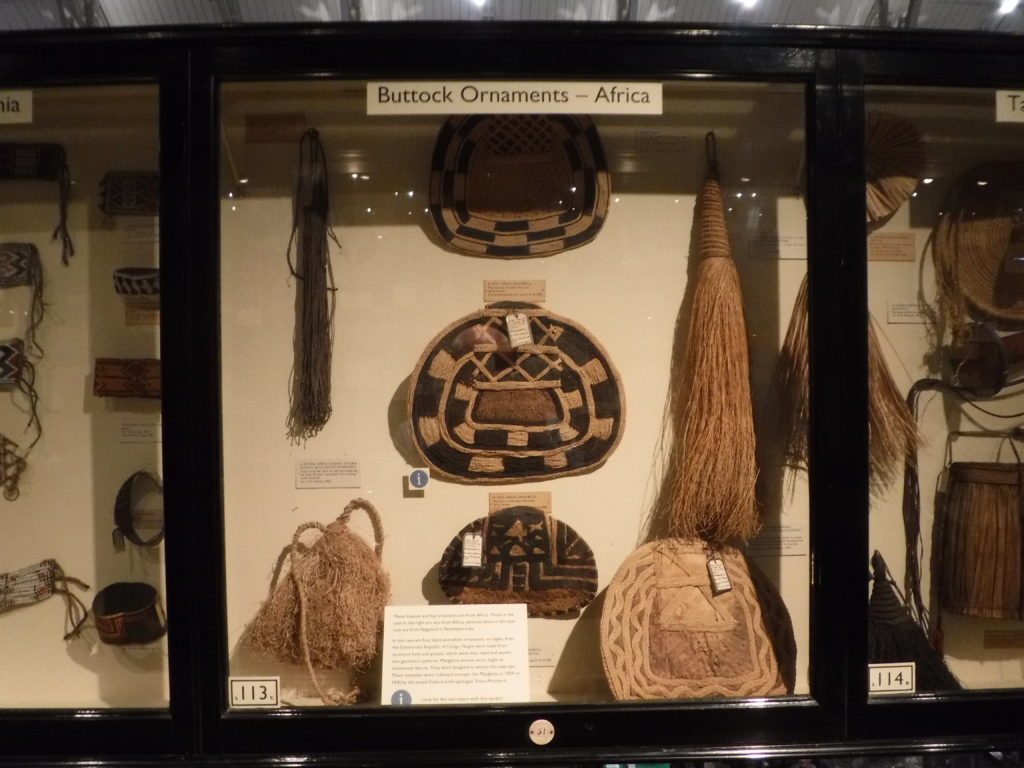
Or a couple of cases of betel chewing equipment…
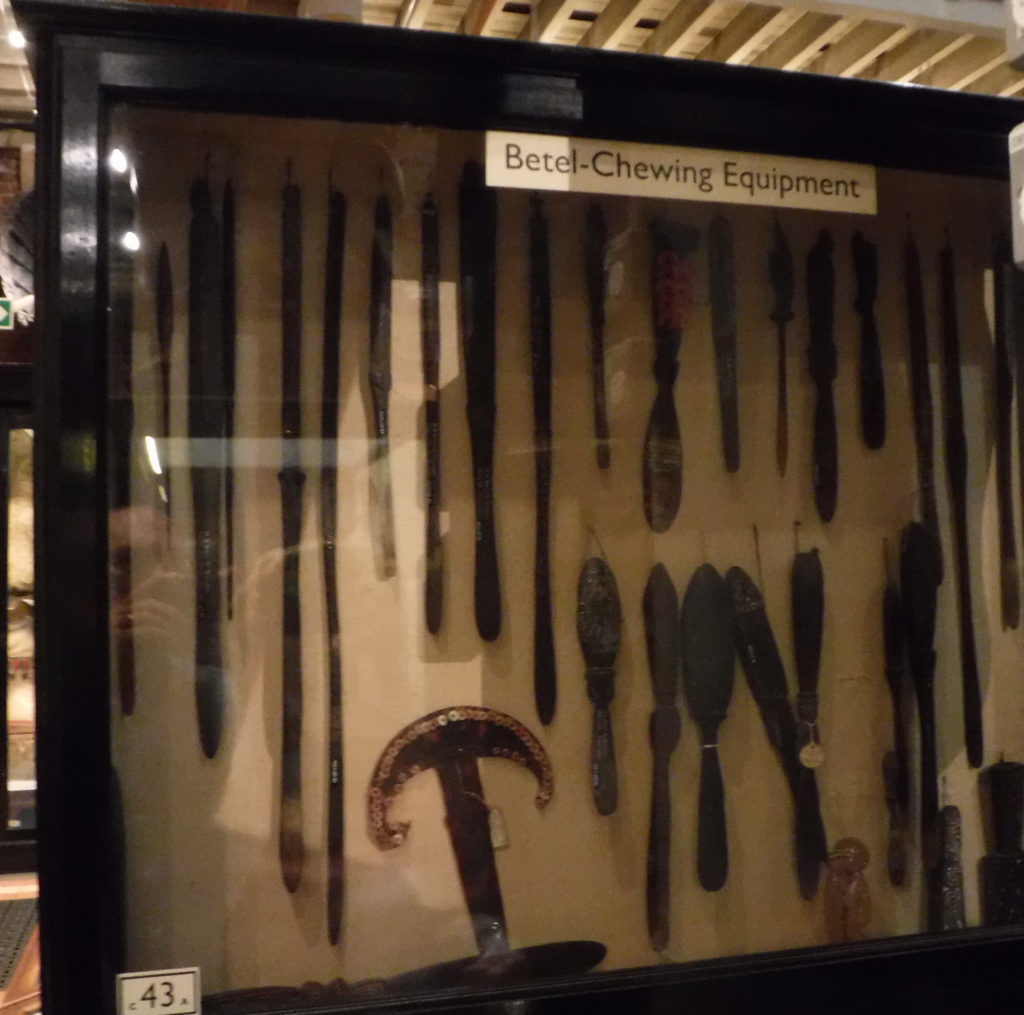
next to the opium pipes and snuff boxes.
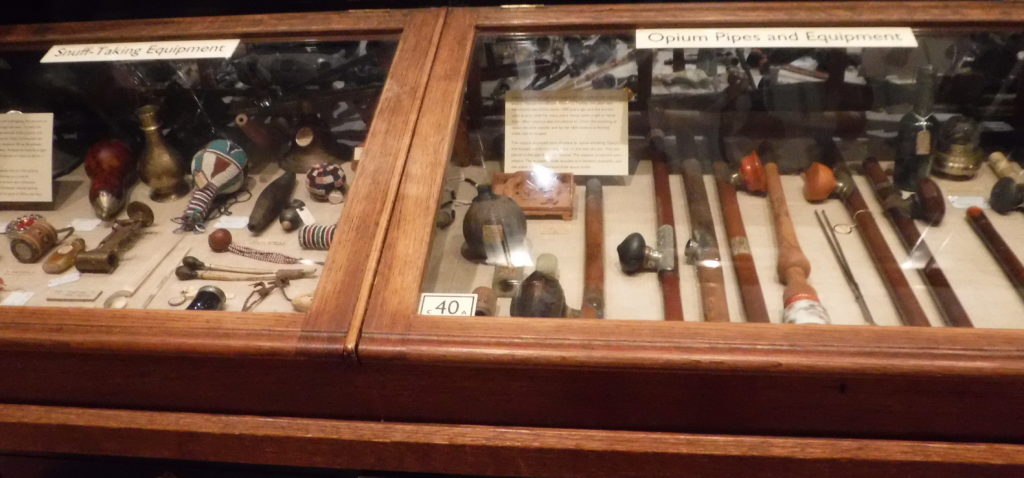
General Pitt-Rivers was a Victorian army officer on a committee to design a new rifle for the British Army, so he started collecting guns. However, once he started collecting, he found he couldn’t stop, and he went on to collect pretty much everything made by the hand of man. The result was the Pitt-Rivers Museum, a vast Victorian treasure house of curiosities.

Other collectors have since donated their collections, and the museum has continued purchasing things ever since. Here’s a modern acquisition, a football made out of an inflated condom covered in rubber bands.

In some of the more recent cases there is some attempt at artistic display. However, the items are still incredibly crowded by contemporary museum display standards. For instance, this case consists entirely of items brought back from Captain Cook’s voyages to Polynesia in the 18th Century. It’s a unique collection of Polynesian art before there are any European influences.
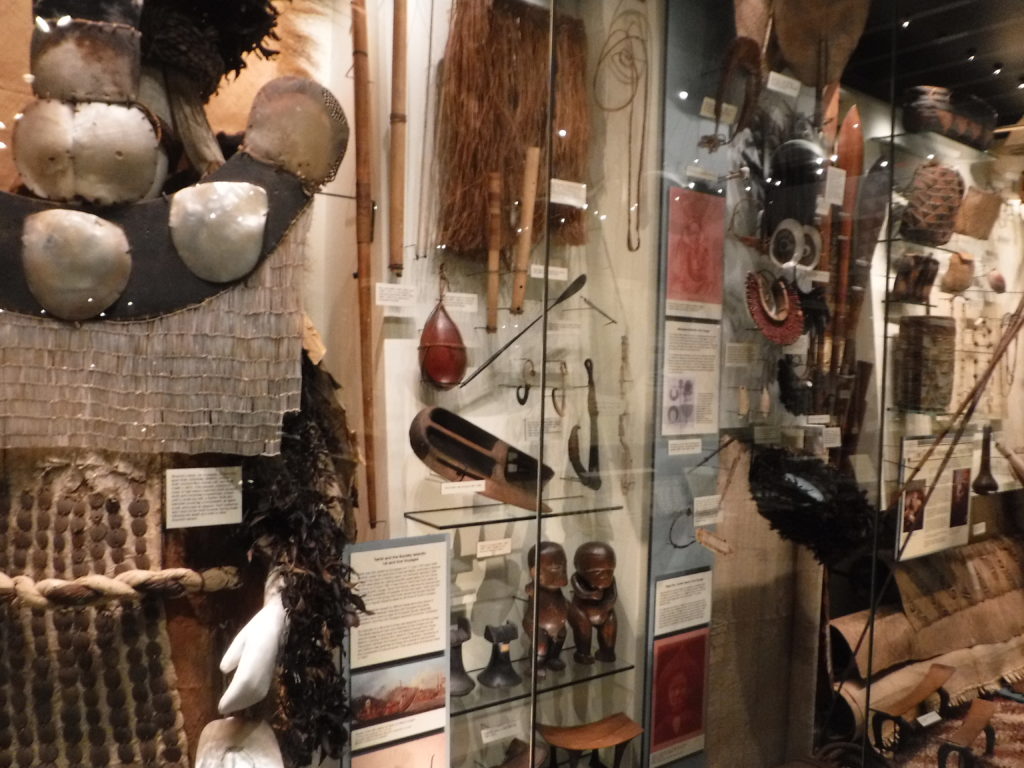
There’s some attempt to make it look good, but in any other museum, this much material would be spread out over one or more rooms, with detailed descriptions of each item. Not in the Pitt-Rivers. They just have too much stuff.
OK, here are some more goodies, jumbled in with no particular order, just like the Pitt-Rivers. Masks.

Seal intestine cape, lovingly repaired with sausage skin.
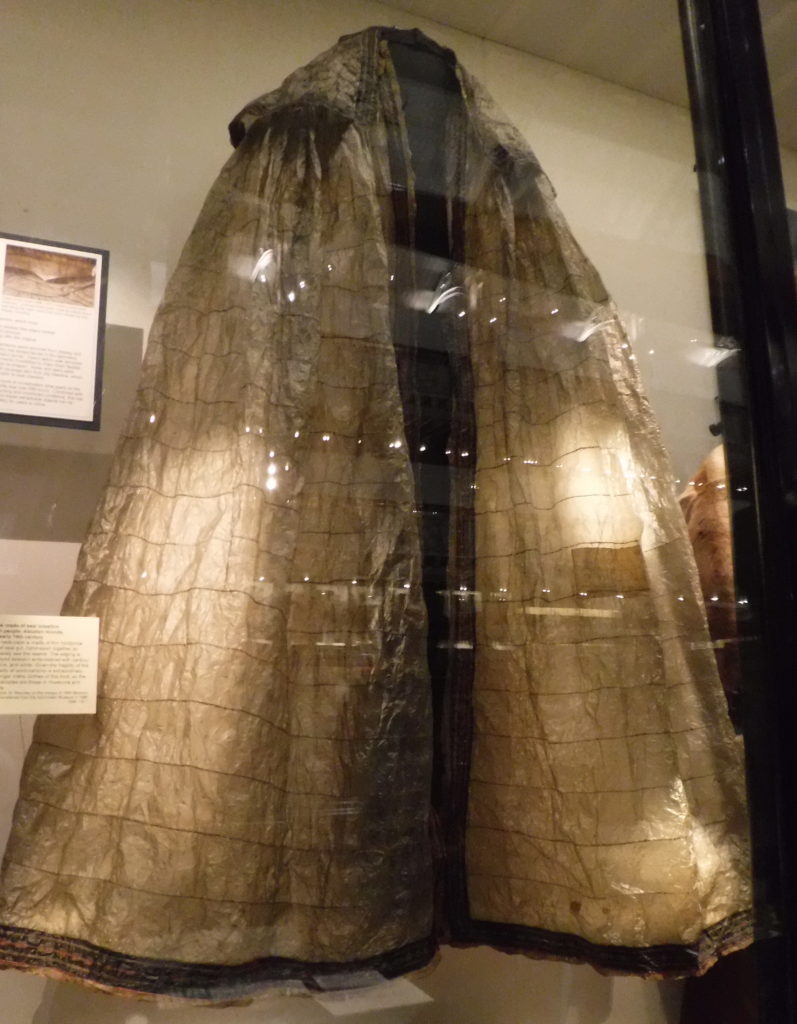
Netsuke. This is only a small part of the netsuke collection, with you could easily spend half a day on.
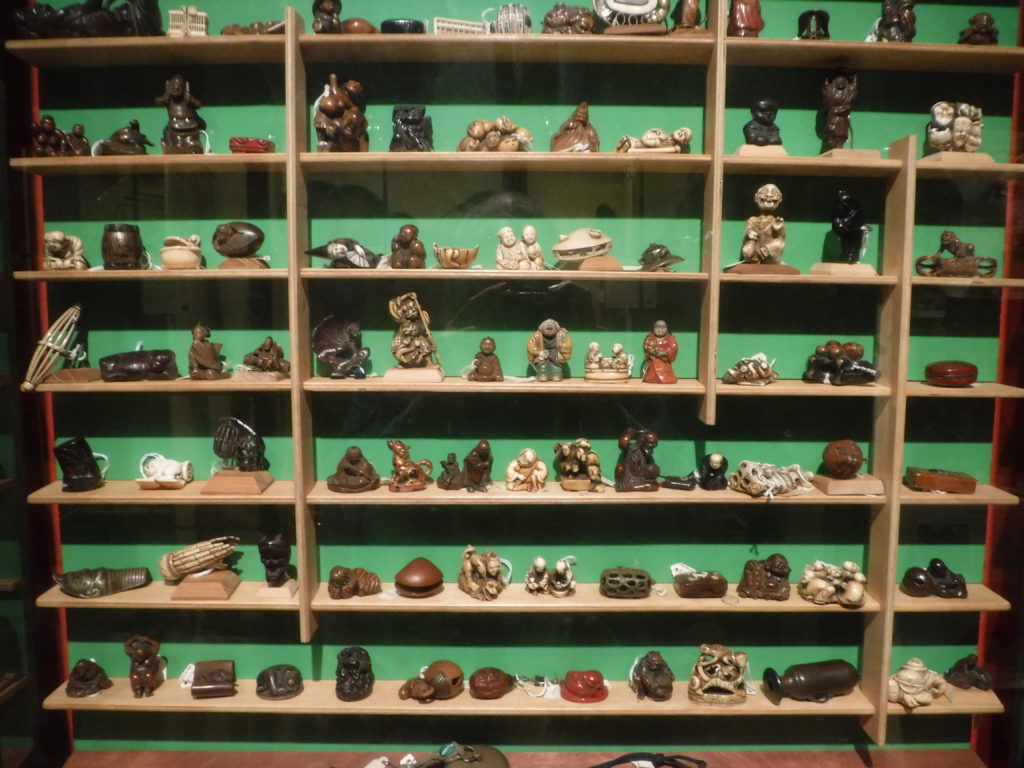
A totem pole.
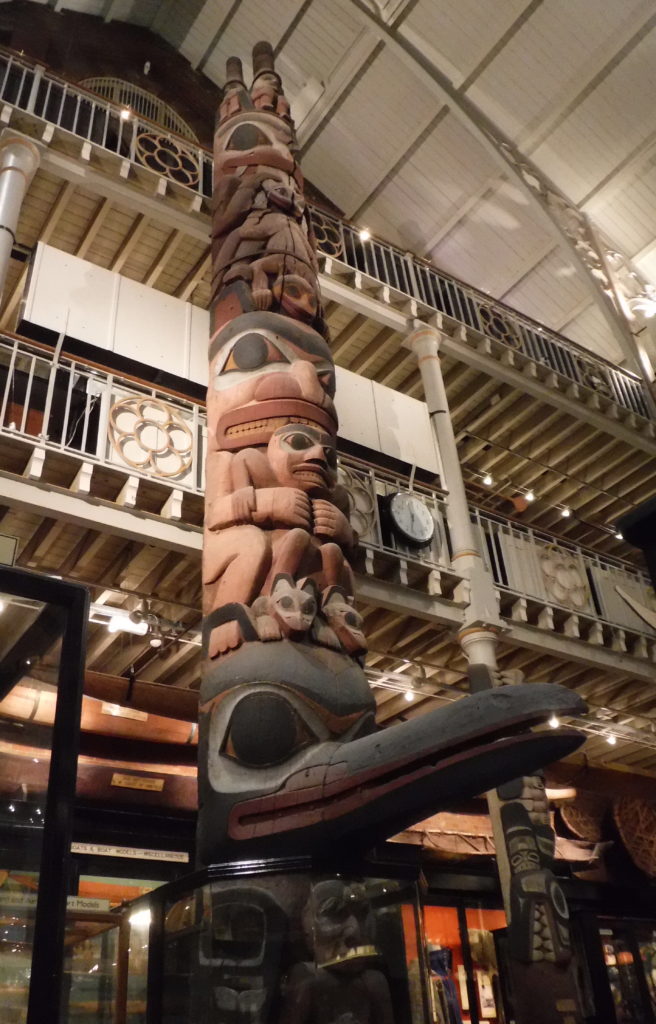
Playing cards.
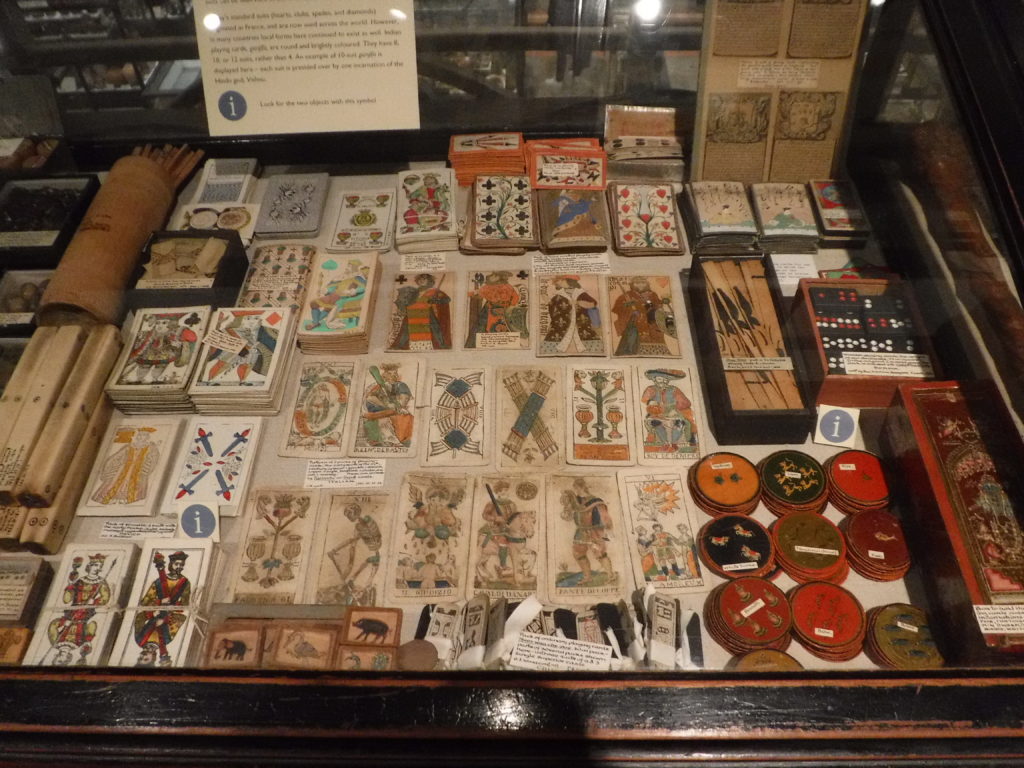
Ancient Egyptian D&D dice.

Beadwork.
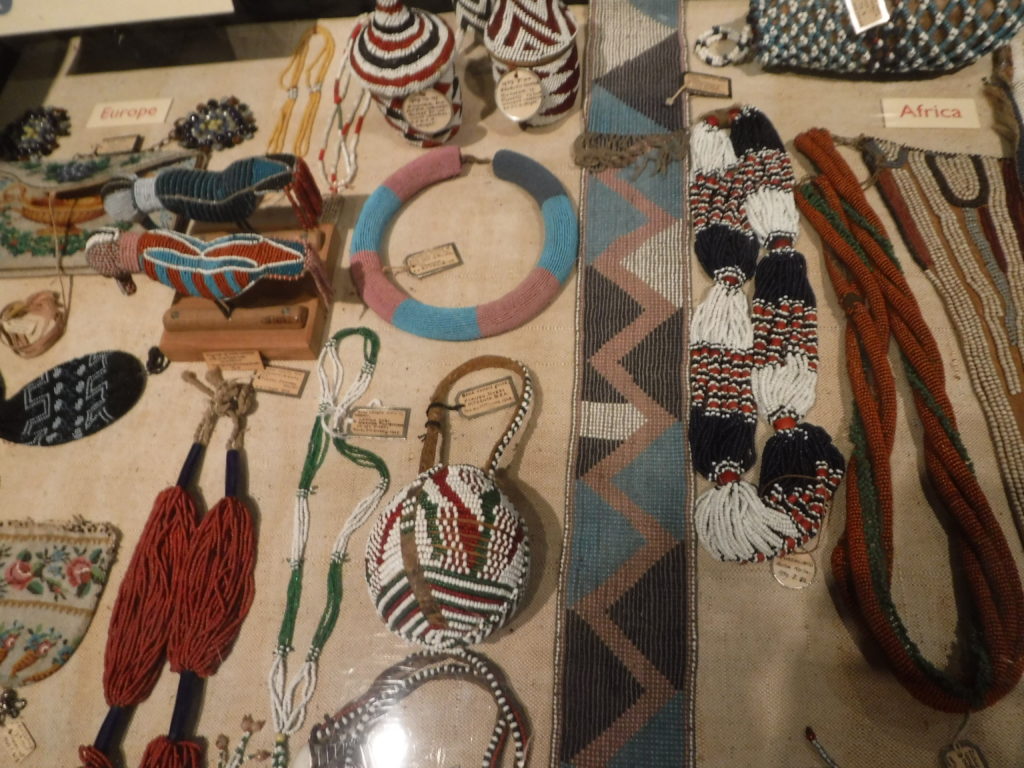
Feathers.

And a one shilling note from pre-revolutionary New Jersey, numbered and signed by hand.
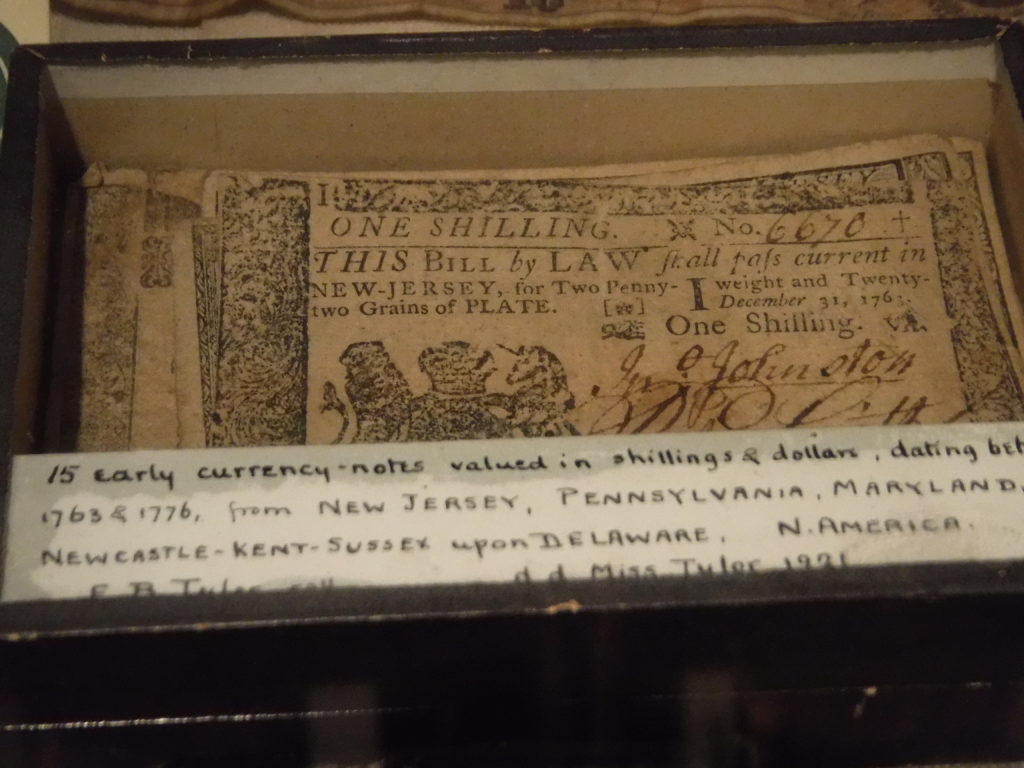
Four farthings to a penny, four pence to a groat, twelve pence to one shilling, five shillings to one crown, twenty shilling to one pound, twenty one shillings to one guinea. It was worth having a revolution just to get away from that stupid currency.
You enter the Pitt-Rivers through the Natural History Museum. Lots of minerals and skeletons, though quite a few of the best skeletons are casts rather than originals.

This caught my eye.
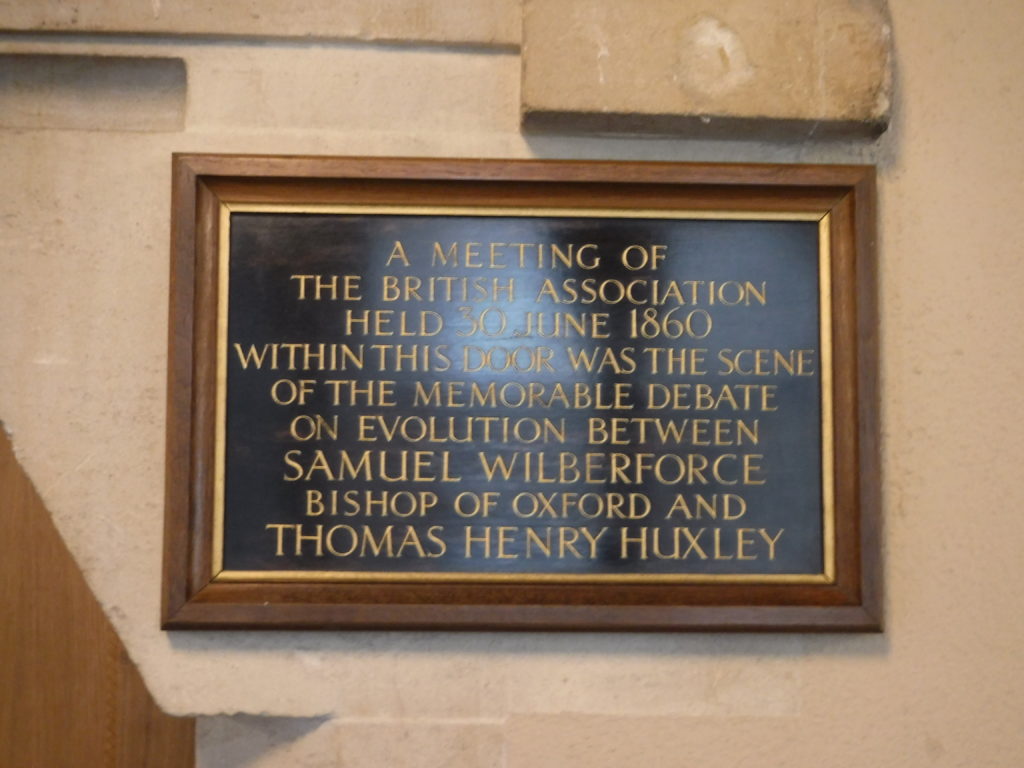
This was the site of the famous debate on the theory of evolution, in which Wilberforce said that if man was descended from apes or angels, he was, “on the side of the angels.” So, if anyone tells you they are on the side of the angels, or indeed getting any sort of message from an invisible sky fairy, the chances are they are just as wrong as Wilberforce.
From the Pitt-Rivers we went on to the Bodleian Library, which (unlike Cambridge University Library) never lends books to anyone. Here’s a request from King Charles I to borrow a book.
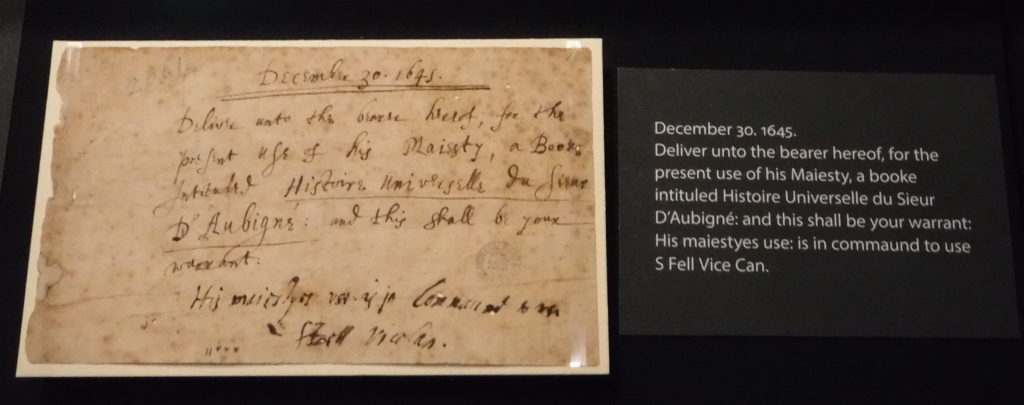
It was refused. The librarian of the day had the same instinct as modern copyright librarians: anything that comes into the library with writing on it gets cataloged. There is a rumor that one librarian at the Cambridge UL used to catalog the paper bag he brought his lunch in if it had an advertisement on it.
A couple of days ago I mentioned the poet Sappho. She fell out of favor, possibly because the medieval church did not approve of her sexual orientation (see “invisible sky fairy” above) and for a long time all we had of her work was the occasional line or phrase quoted by someone else. However, in the past couple of centuries some more of her work has turned up in archeological digs. This papyrus from the 2nd Century with one of her poems was found in 1896 in a rubbish dump in Egypt.
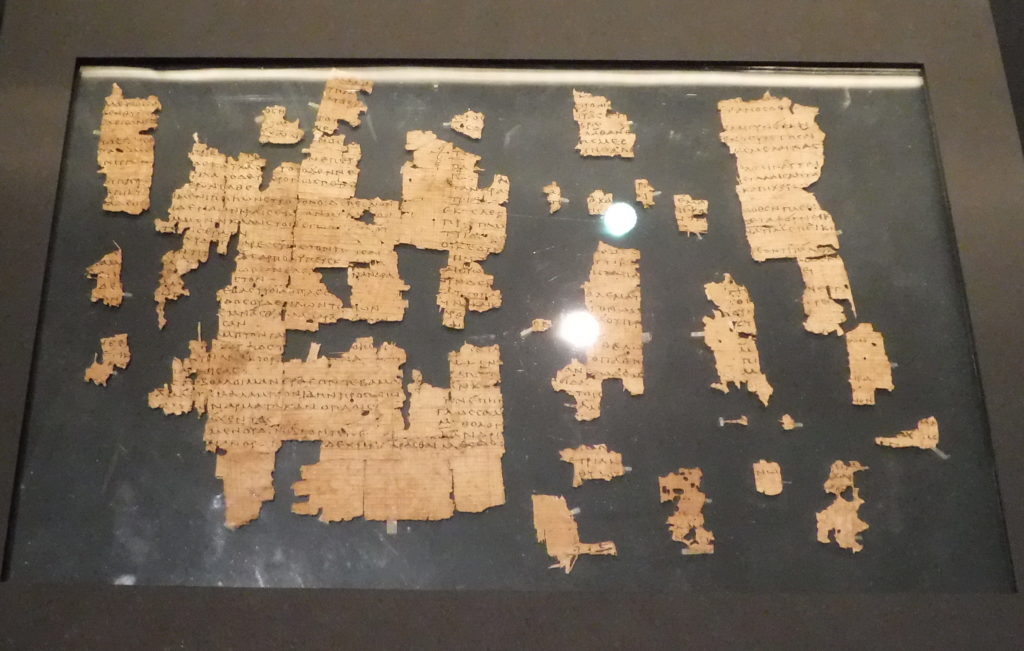
These are from the exhibition of their treasures, which also includes Oscar Wilde’s unpaid bill from the local department store, Holst’s manuscript score of The Planets, and a Gutenberg Bible.
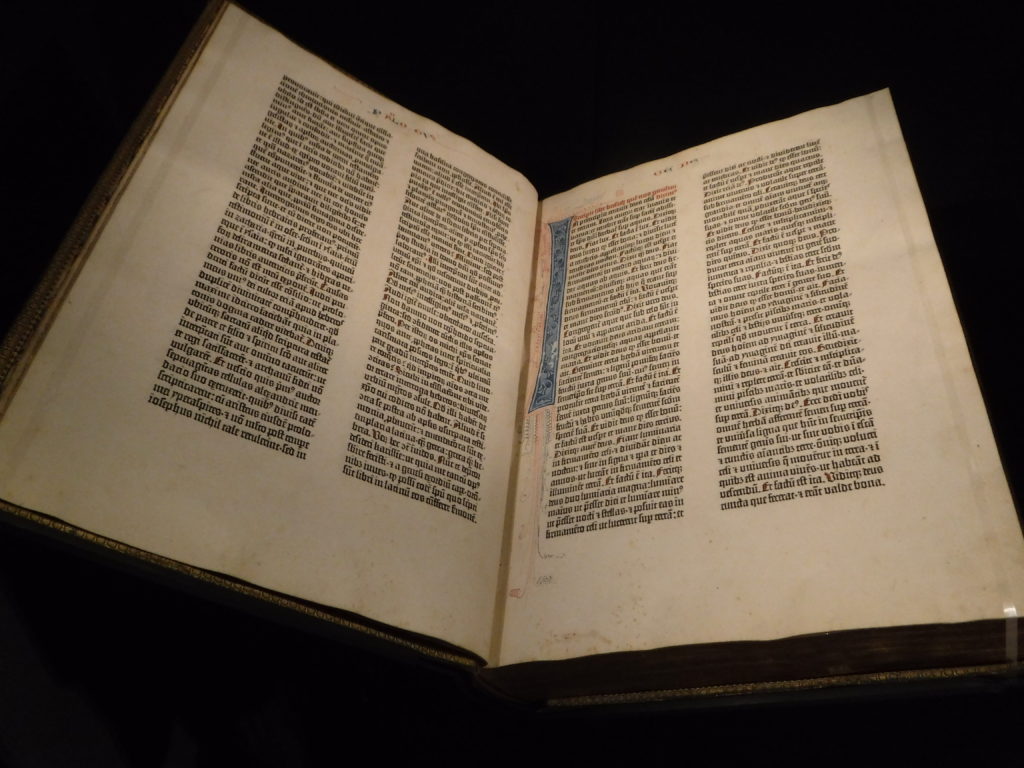
That is such a lovely piece of printing. All the colored bits were filled in by hand, which seems like a lot of work but was a lot faster than copying all the words.
The Bodleian also has the original Oxford comma, but that is kept under lock and key in a subterranean dungeon in case anyone steals it and we have to go back to lists, arrays and series without that necessary, elegant and informative punctuation mark. Oh, sh*t, b*gg*r and d*mn! Someone has nicked it again.
While we are waiting for the Bodleian to come up with the ransom (they get the royalties to Wind in the Willows so it should only take a year or two) here’s a page from their exhibition on Death in Shakespeare’s time. This is one week of mortality figures for London, during a plague year.

6,988 people died from the plague, two died from grief and three died from wind.